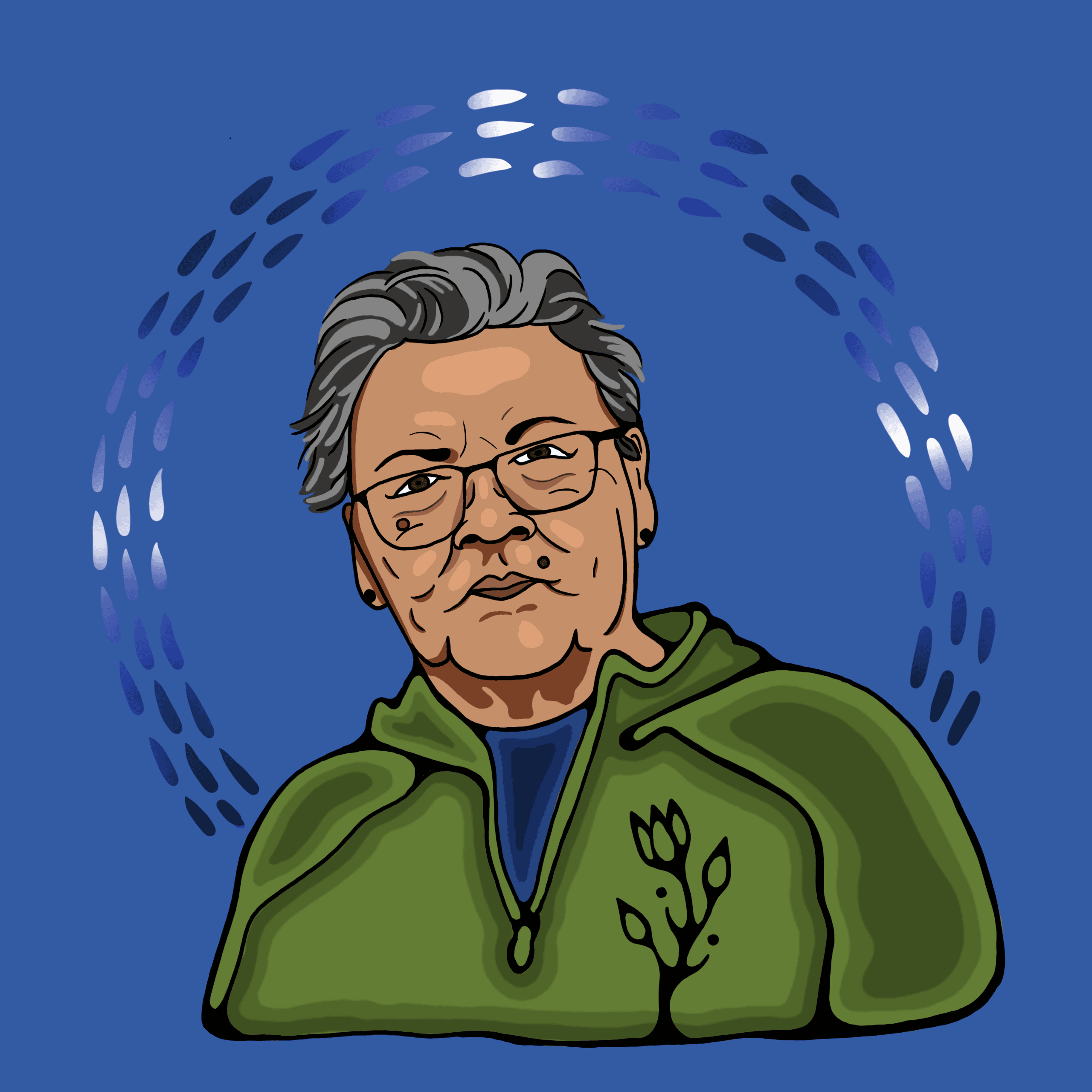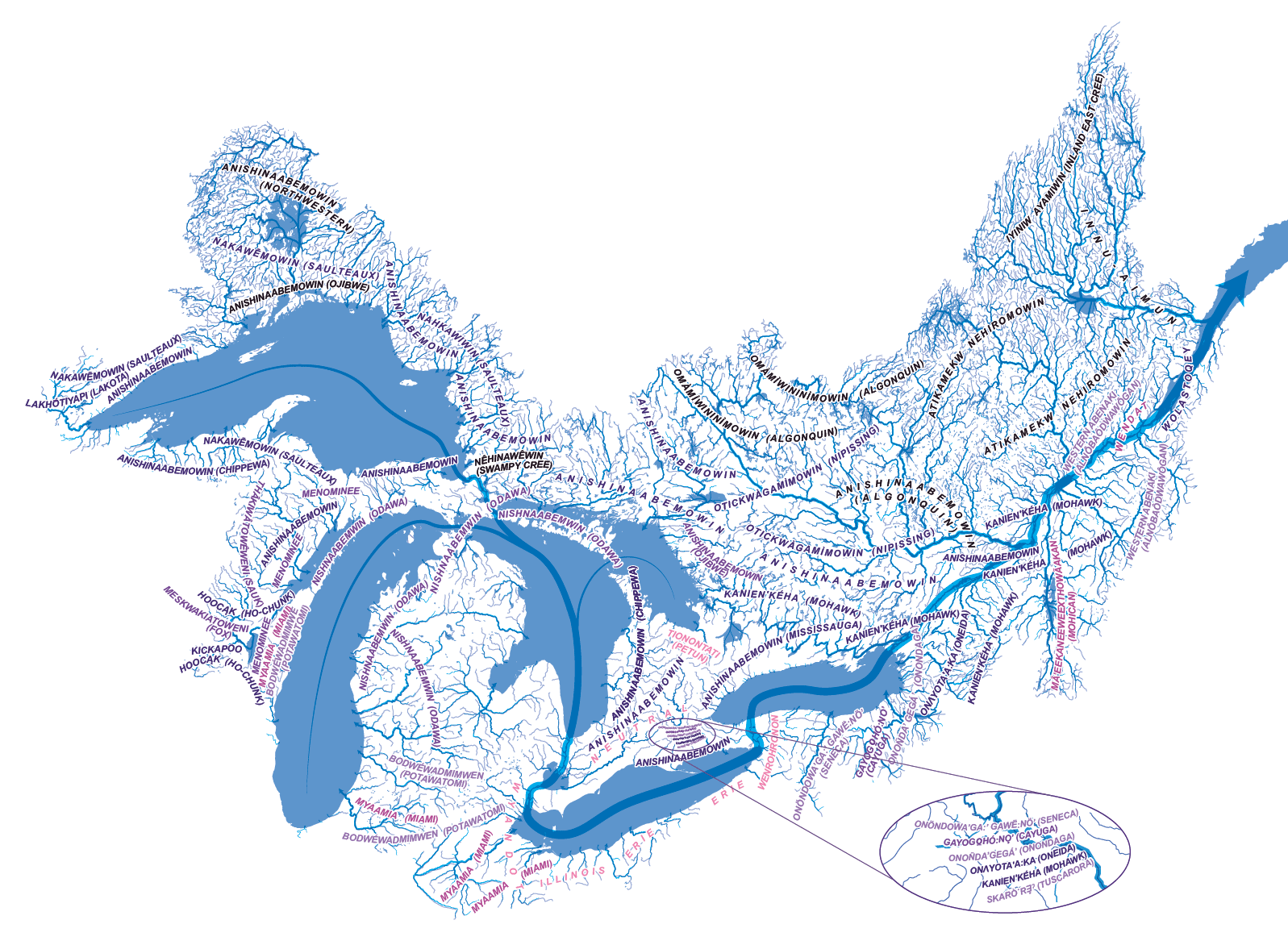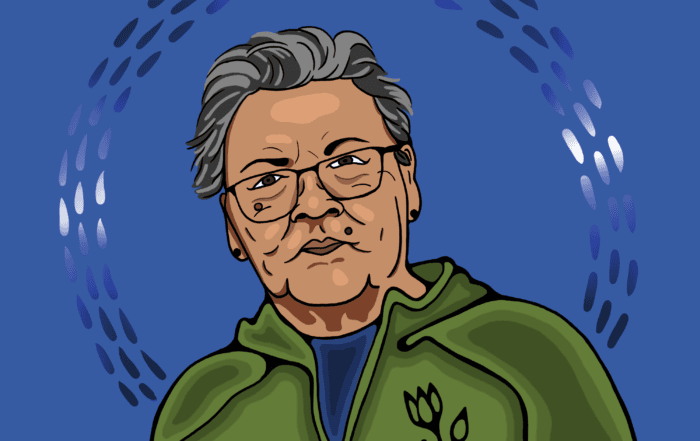
Portrait of Elder Barbara Nolan by Miskwaa Designs.
There are many ways to describe the water from the worldview of the Anishinaabe. There is not just one word to describe something as you often find in English. Anishinaabemowin-fluent speakers may use words interchangeably within a conversation as the language is fluid like the water itself. Nibi is a sacred spiritual being to be respected, nurtured and protected for future generations.
Words for water in Anishinaabemowin
You can tell it’s alive, just like us. We can really understand its meaning when we break it down. Ni comes from ani, meaning “going away,” like ni-giiwen! Which means “Go home!” Or we can say animijwan which means “it flows away.” Bi means “to come this way,” or “toward us.” Like when we say bi-nda-wiisni, meaning “he’s coming to get something to eat.” So nibi describes how it goes out and then it comes back.
Just like the water along the shore comes in and goes out. Just like it’s breathing. So water is alive.
On a cultural teaching and water
We refer to water as the blood of Mother Earth. Everything on earth needs that water to survive, not just human beings. When a baby starts to grow in the womb, there’s water inside. The baby grows in that water. We talk about birthwater — when a woman gives birth, the water comes out first and then the baby slides out in that water. Water is life.
We have to respect that water before it disappears. Otherwise we’re all going to disappear. All the plants, all the animals, all the fish, everything will disappear if that water gets destroyed by mankind. That’s the bottom line. It’s everyone’s responsibility. Not just us as Annishinaabek people; it’s every human being’s responsibility to keep that water fresh, to keep it clean.

Original languages of Great Lakes.- St. Lawrence watershed. Map by Chris Brackley.



